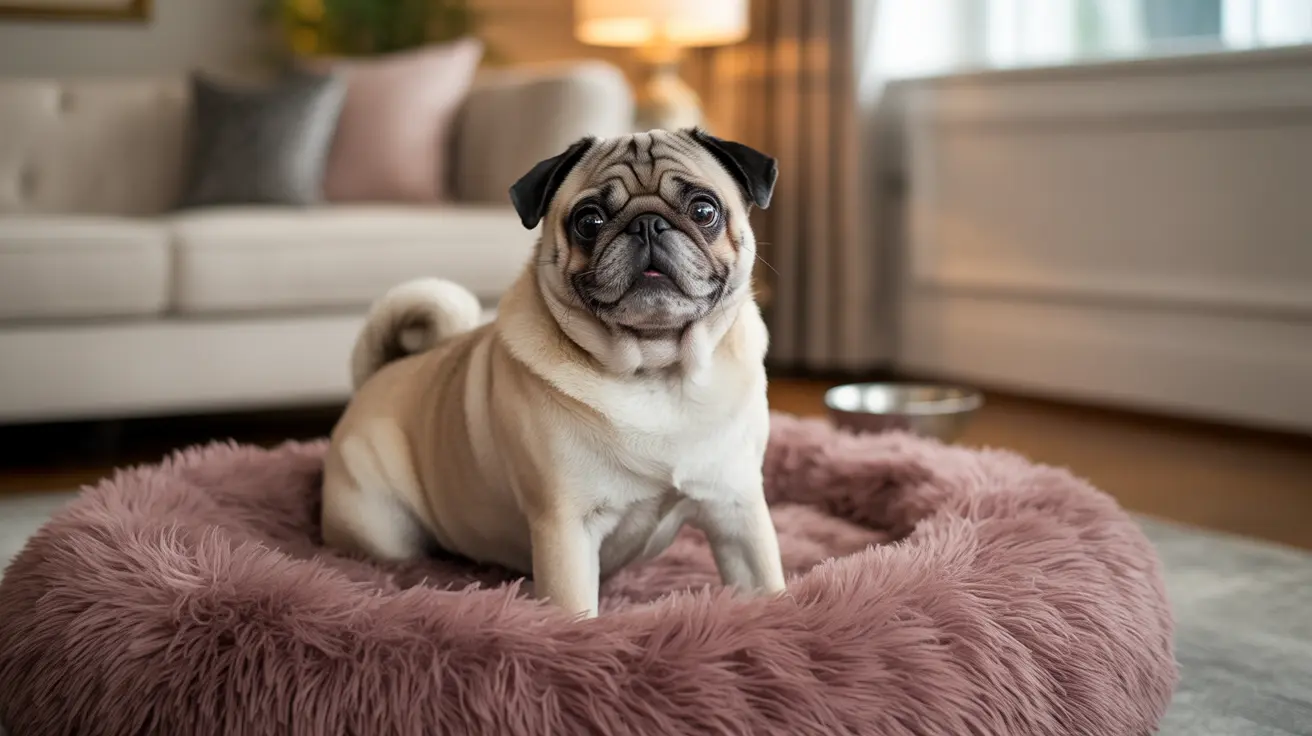The distinctive curly tail of a pug is one of their most recognizable features, setting them apart from other dog breeds. This unique characteristic isn't just a cosmetic quirk – it's a fascinating result of genetics, selective breeding, and evolutionary history that tells us much about these beloved companions.
Understanding the science and significance behind the pug's curly tail can help owners better care for their pets and appreciate this distinctive breed trait. Let's explore the anatomy, genetics, and health implications of this charming characteristic.
The Genetics Behind the Pug's Curly Tail
The curly tail in pugs results from a specific genetic mutation affecting the vertebrae at the base of the tail and spine. These vertebrae are uniquely wedge-shaped, causing the tail to naturally twist and curl over the back instead of extending straight. This genetic trait has been carefully preserved through centuries of selective breeding.
Most pugs display one of two curl types: the single curl (one spiral) or the highly prized double curl (two complete spirals). Interestingly, only about 25% of registered pugs achieve the coveted double curl, making it a particularly special trait in show circles.
Historical Significance and Breed Standards
The curly tail has been a defining feature of pugs since their origins in ancient China, where they were cherished as companions to nobility. This physical trait wasn't just aesthetic – it was considered a symbol of good fortune and distinguished breeding.
Today's breed standards from major kennel clubs worldwide specify that a pug's tail should be set high and curled tightly over the hip. The double curl is particularly valued in show rings, though both single and double curls are accepted within breed standards.
Health and Communication Through the Tail
While the curly tail is beautiful, it also serves practical purposes. Pugs use their tails for communication, despite having limited movement compared to straight-tailed breeds. Tail movement typically begins around seven weeks of age in puppies, and even slight variations in the curl can indicate different emotional states.
The tail's position and curl can also be an important indicator of a pug's health. A suddenly uncurled or limp tail might signal various health issues, from minor muscle strain to more serious spinal problems. Regular monitoring of tail position and movement is an important part of pug health care.
Caring for Your Pug's Curly Tail
Proper care of a pug's curly tail involves regular inspection and gentle cleaning. The tight curl can create warm, moist areas that require attention during grooming. Owners should check for any signs of irritation, infection, or changes in the tail's natural position.
It's crucial to handle the tail gently and never force it to curl more tightly. Young puppies' tails may not fully curl until they mature, and forcing the curl could lead to injury or discomfort.
Frequently Asked Questions
Why do pugs have tightly curled tails and what causes the curl?
Pugs have curly tails due to a genetic mutation that creates wedge-shaped vertebrae, causing the tail to naturally twist and curl over their back. This trait has been enhanced through selective breeding over many generations.
What is the difference between a single curl and a double curl pug tail?
A single curl forms one complete loop over the back, while a double curl makes two full spirals. The double curl is considered more desirable in show circles and is present in only about 25% of pugs.
How can I tell if my pug's tail health indicates a problem like injury or nerve damage?
Watch for sudden changes in tail position, inability to maintain the curl, signs of pain when touched, or complete limpness. Any significant changes in the tail's normal appearance or behavior should prompt a veterinary visit.
At what age do pug puppies start wagging their curly tails?
Pug puppies typically begin wagging their tails around seven weeks of age. The full curl may develop gradually as they mature, with some puppies not showing their final tail shape until several months of age.
What should pug owners know about grooming and caring for their dog's tightly curled tail?
Regular cleaning and inspection of the tail fold area is essential to prevent moisture buildup and skin issues. Be gentle when handling the tail, never force it to curl more tightly, and maintain good overall hygiene with regular grooming.
Understanding and properly caring for your pug's curly tail is an important aspect of responsible ownership. This distinctive feature isn't just adorable – it's a window into your pet's health and happiness, deserving regular attention and proper care.






